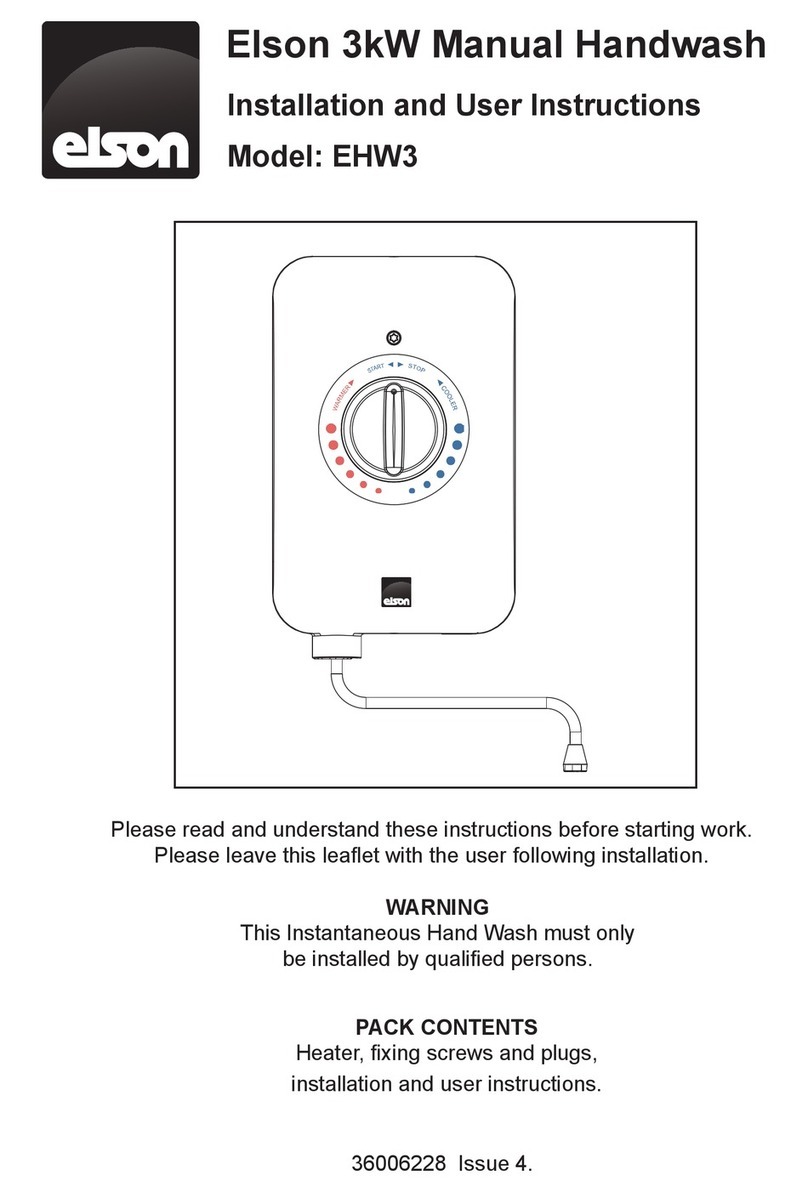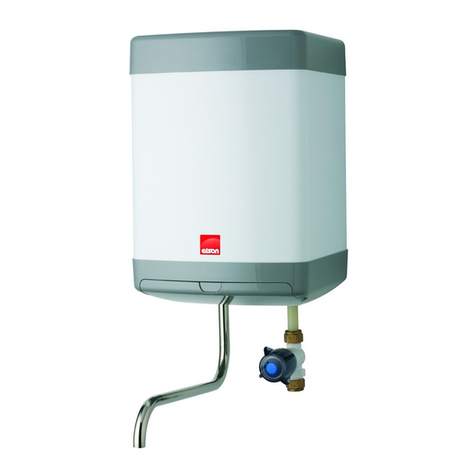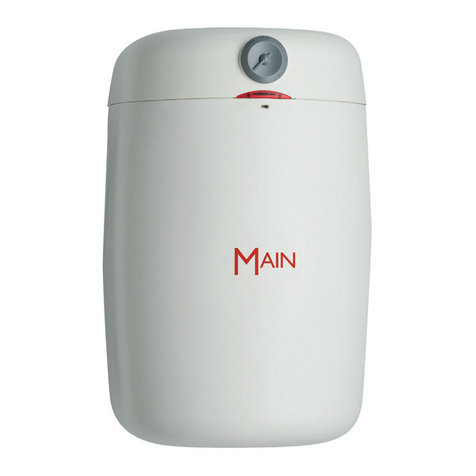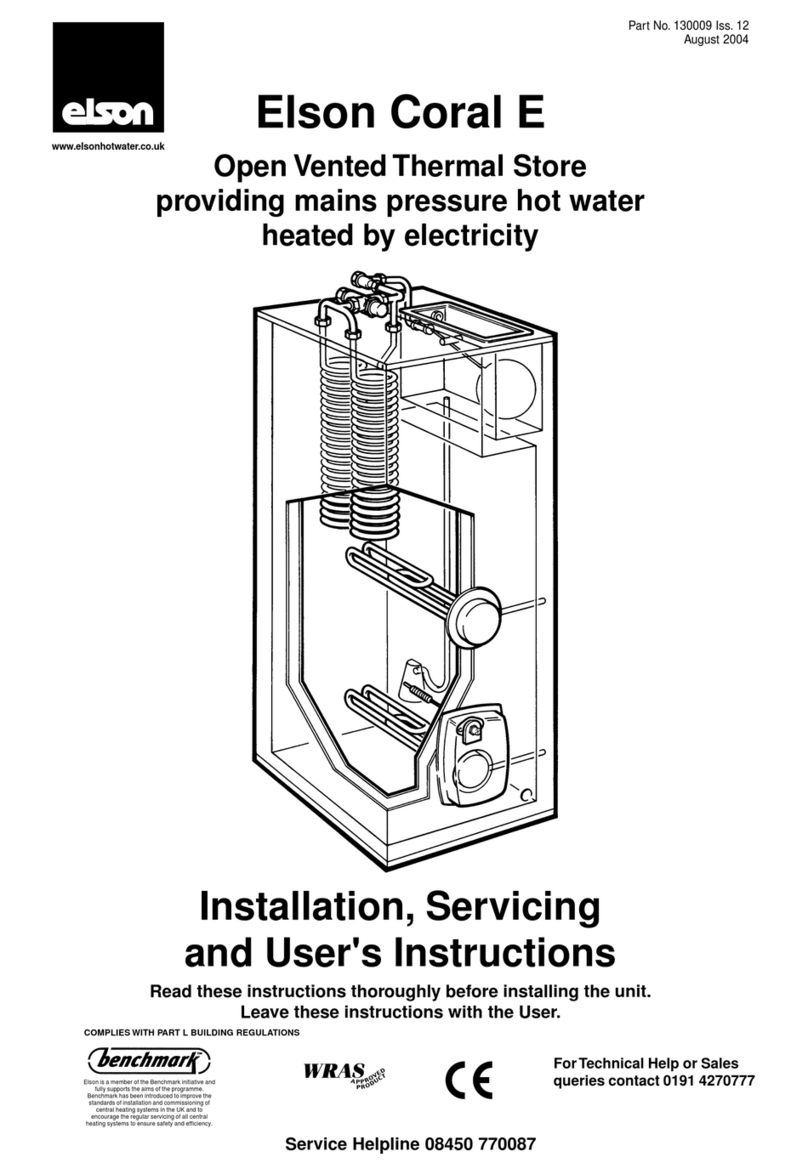FILLING THE UNIT WITH WATER
Ensurethatallttingsandimmersionheatersarecorrectly
ttedandtightened.Animmersionheaterkeyisprovided
to aid tightening the immersion heater(s)
AUTO FILL UNIT
Check all connections for tightness including the•
immersion heater(s). An immersion heater key
spanner is supplied for this purpose.
Ensure that both drain cocks are CLOSED.•
Open a hot tap furthest from the Thermal Store.•
Openthe mains stop cockto ll theunit.When•
water ows from the tap, allow to run for a few
minutestothoroughlyushthroughanyresidue,
dirt or swarf, then close the tap.
Open successive hot taps to purge the system•
of air.
TheThermalStorewillcontinuetollviatheball•
valve located in the feed & expansion header tank.
This will stop when the cylinder store is full.
Set the level of water in the cistern by adjusting•
theheightoftheballoatusingtheinternalwater
height gauge as shown in Fig.11 page 13.
MANUAL FILL UNIT
Check all connections for tightness including the•
immersion heater(s). An immersion heater key
spanner is supplied for this purpose.
Ensure that both drain cocks are CLOSED.•
Open a hot tap furthest from the Thermal Store.•
Openthe mains stop cockto ll theunit.When•
water ows from the tap, allow to run for a few
minutestothoroughlyushthroughanyresidue,
dirt or swarf, then close the tap.
Open successive hot taps to purge the system•
of air.
The ‘lling loop’ is used for introducing mains•
water into the cylinder for lling and topping up
purposes.The‘lingloop’hasanisolatingvalve
at each end. To introduce water into the system,
undo one of these valves completely and gently
opentheothervalvetocontroltherateofowof
water into the cylinder. Introduce water until the
sight gauge on the feed & expansion tank is level
withthebottomlllineasshowninFig.12page
13.Turnbothvalvesofffully.Thetemporarylling
loop should be disconnected after installation to
comply with the requirements of the Water Supply
(Water Fittings) Regulations 1999
The feed & expansion header tank water level•
should be checked regularly. If required ll with
cleancoldwaterviathellingloopto‘topup’.
SYSTEM CHECKS
Upon commissioning a competent engineer should:
Check all water connections for leaks and rectify•
as necessary.
Check water pressure – maximum 5.0bar•
Check operation of all service valves•
COMMISSIONING Check operation of the blending valve and test that•
the water temperature (hot ow mix) is at 55°C
when the store temperature is operating at 75°C.
Check operation of the immersion heater•
thermostats and settings.
Complete the service record at the back of the
commissioning booklet provided to comply with
the manufacturers guarantee and Benchmark
requirements.
DIRECT UNIT
Switch on electrical supply to the immersion heater(s)
and allow the cylinder to heat up to normal working
temperature (75°C recommended, approximately
graduation 4 on the thermostat). If necessary the
temperature can be adjusted by inserting a flat
bladed screwdriver in the adjustment knob on top of
the immersion heater thermostat and rotating. The
adjustment range 1 to 5 represents a temperature
range of 37°C to 85°C. Check the operation of
thermostat(s).
INDIRECT UNIT
Fill the indirect (primary) circuit following the boiler
manufacturer’s commissioning instructions. To ensure
thecylinderprimaryheatexchangerislled,the2port
motorised valve should be manually opened by moving
the lever on the motor housing to the MANUAL setting.
When the primary circuit is full return the lever to the
AUTOMATIC position.
Switch on the boiler, ensure the programmer is set to
Domestic Hot Water and allow the cylinder to heat up
to a normal working temperature (75°C recommended,
approximately graduation 5 on the thermostat).
If necessary the temperature can be adjusted by
insertingaatbladedscrewdriverintheadjustment
knob and rotating. The minimum thermostat setting
is 12°C.
The adjustment range 1 to 5 represents a temperature
range of 37°C to 85°C.
Check the operation of the indirect thermostat and
motorised valve during the heating cycle.
BENCHMARK LOG BOOK
On completion of the installation and commissioning
procedures detailed in this manual the Benchmark
“Installation, Commissioning and Service Record Log,
pages 26 and 27 should be completed and signed off
by the competent installer or commissioning engineer
in the relevant sections. The various system features,
location of system controls, user instructions and
what to do in the event of a system failure should be
explained to the customer. The customer should then
countersign the BenchmarkTM commissioning checklist
(page 26) to accept completion. The Service Record
should be lled in when any subsequent service or
maintenance operation is carried out on the product.










































